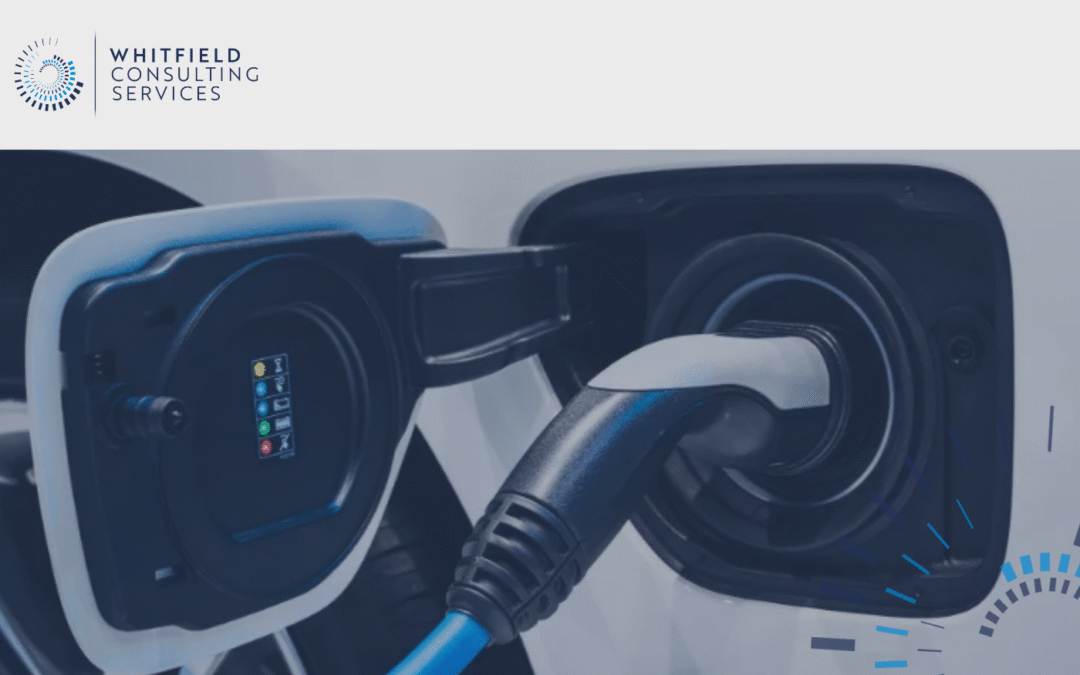Electric vehicle drivers will never be more than 30 miles from a rapid charging station, that was the promise the Chancellor Rishi Sunak made in the 2020 Budget. For this to happen, significant infrastructure changes need to take place.
As part of supporting the drive to make this promise a reality, Whitfield Consulting Services is working with a number of clients to deliver civil engineering designs for a variety of electric charging projects. Through these, we have acquired significant knowledge to enable us to define the best practice that will ensure successful construction in future projects.
One of the key learnings has been that early-stage involvement with a project can bring opportunities for us as civil engineers to add value to a scheme in many ways, improving project outcomes by delivering designs that are constructable, preventing issues from arising and ensuring timescales are met.
Applying knowledge in different contexts
We’ve recently been working on EV charging projects in a variety of contexts, which has brought about opportunities to extend our understanding and bring value from one sector to another.
One project with UK Power Networks Services that has specifically contributed to delivering on Mr Sunak’s promise was in Pimlico, where UKPNS were introducing electric vehicle charging facilities to a suspended slab in an existing basement car park in Central London.
This was a logistically challenging project which included a new DNO substation, elevated cable routes and associated charging equipment. We were involved from the outset, providing ground investigation and utilities surveys, followed by a feasibility report through to production of the detailed design.
Not all EV charging projects are for domestic use. We’ve been fortunate to work alongside UK Power Networks Services on a number of projects, including one at South East London Combined Heat and Power (SELCHP) waste-to-energy plant in Lewisham. This was an innovative scheme to provide charging for Westminster City Council’s street cleansing and waste collection fleet. In this case, the fleet of electric refuse collection vehicles (eRCV), vans, cages and sweepers (among others) will all be powered by energy produced from the unrecyclable waste they collect, providing a sustainable solution to improving air quality.
We have carried out detailed design for a modular EV charging substation for Hitachi Energy, that they will roll out to a number of their clients, as well as being very active on a Green Recovery project for UKPNS. This UKPNS project, which will provide power for 12 EV charging sites from the DNO supply to the location where the EV charging infrastructure would be required, is part of the wider programme of Green Recovery works funded by OFGEM to accelerate investment in local electricity grid infrastructure over the coming year.
Best practice in EV charging design
From the outset, gathering as much information about the site as possible brings great value. Having clear and current information on buried services, ideally verified by PAS 128 survey, as well as surveys and investigations into topographic and ground conditions, ensures the infrastructure can actually be installed in its intended location. Finding this information out further down the line clearly runs the risk of impacting the project’s timescales and budget.
Structural assessments should also be carried out where appropriate. Problems surrounding the load bearing capacity of the existing structure, when heavy electrical equipment is to be installed on an existing structure, brings about potential risk of delays. In the Pimlico project for example, it would not be possible to site a substation on a multi-story car park slab if that structure has not been designed for it so having clarity on any previous or interconnected steps and decisions means that provisions could be made.
In relation to sharing information, it is also important for the equipment information to be made available as early as possible in order that the civil engineering design can be carried out. Furthermore, we also need to be sure that the cabling design is at sufficient maturity to allow the cable route management system to be designed: in order that we can design the duct routes, we need to know number of cables and the mechanical properties of such cables. Included in this would be details of weights, electrical General Arrangement drawings, and cable information detailing number, size, weight and bending radii.
Where long cable routes are required between two points, it is important to thoroughly investigate the feasibility of crossing other utilities (railways, motorways, canals etc) as well as any private land (easements). Not knowing this information can be a detrimental for a project, potentially causing significant delays.
Finally, we need to know the proposed layout of where the electric charging bays are required, and also information about the types of vehicles so that a Swept Path Analysis can be undertaken.
Mitigating time and budget risks
When designing, we are always mindful of ensuring constructability. We need to be confident that what works ‘on paper’ will translate to a workable solution that takes into consideration any aspect that could potentially derail progress.
We know how vital it is to be flexible when working with clients as, in almost every site, there is a degree of unpredictability. It’s important to be focused on delivering an end solution, not necessarily just a response to a brief. Drawing on our previous experience, in both electrical vehicle charging projects as well as our broader experience in rail, civils and power, means that when unexpected elements arise, we can look to provide solutions.
If you would like more details of our experience in electric vehicle charging, including further details of successful projects, please get in touch by emailing info@wcs-consult.co.uk or calling 020 3581 7847.
